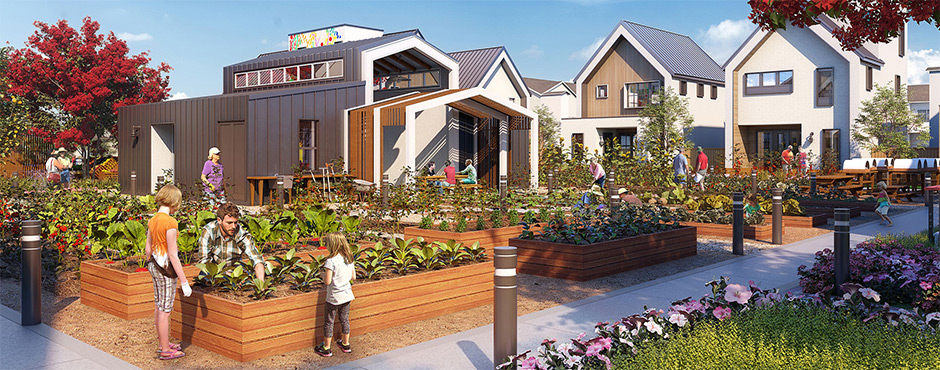 June 2020 – Developments built around food-production are increasing in popularity across the country. Known as agrihoods, they are a community centered around a working farm or community garden. As of May 2020, there are at least 90 established agrihoods in the United States and at least 27 more planned for development. The idea stems from farm-to-table eating, urban farming, food co-ops, and community-supported agriculture initiatives. Recently, Planning Commission staff completed a Review of Agrihood Case Studies, which provides an overview of Comprehensive Plan and zoning policies utilized to establish agrihoods in four states, including Florida.
June 2020 – Developments built around food-production are increasing in popularity across the country. Known as agrihoods, they are a community centered around a working farm or community garden. As of May 2020, there are at least 90 established agrihoods in the United States and at least 27 more planned for development. The idea stems from farm-to-table eating, urban farming, food co-ops, and community-supported agriculture initiatives. Recently, Planning Commission staff completed a Review of Agrihood Case Studies, which provides an overview of Comprehensive Plan and zoning policies utilized to establish agrihoods in four states, including Florida.
Agrihoods promote health through access to fresh produce and social interaction with educational opportunities that foster community and social ties. Primarily developed as master-planned residential housing communities targeting millennials, agrihoods are mostly located in suburban and rural areas. Many employ professional farmers, with the concept being suburban residential neighborhoods with a rural feel.
Agrihoods present a unique situation for local governments and planning agencies. In most cases, land use and zoning policies are not established to encourage or often allow the development of such communities. Furthermore, most zoning standards separate or limit allowable uses and specify minimum lots for housing, thereby making clustering of development difficult. Even with these challenges, communities and developers have found various ways to create agriculture centered communities.
